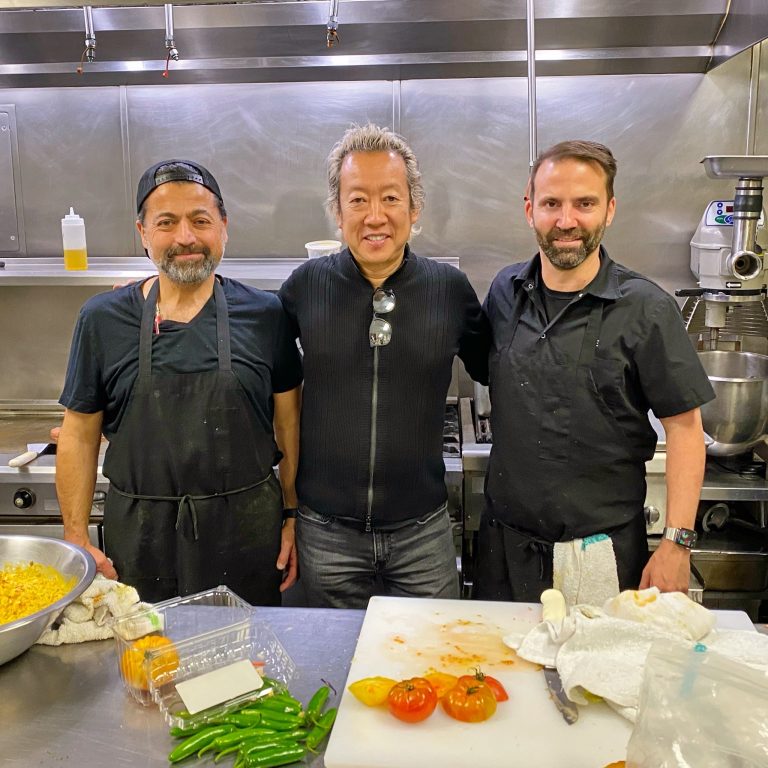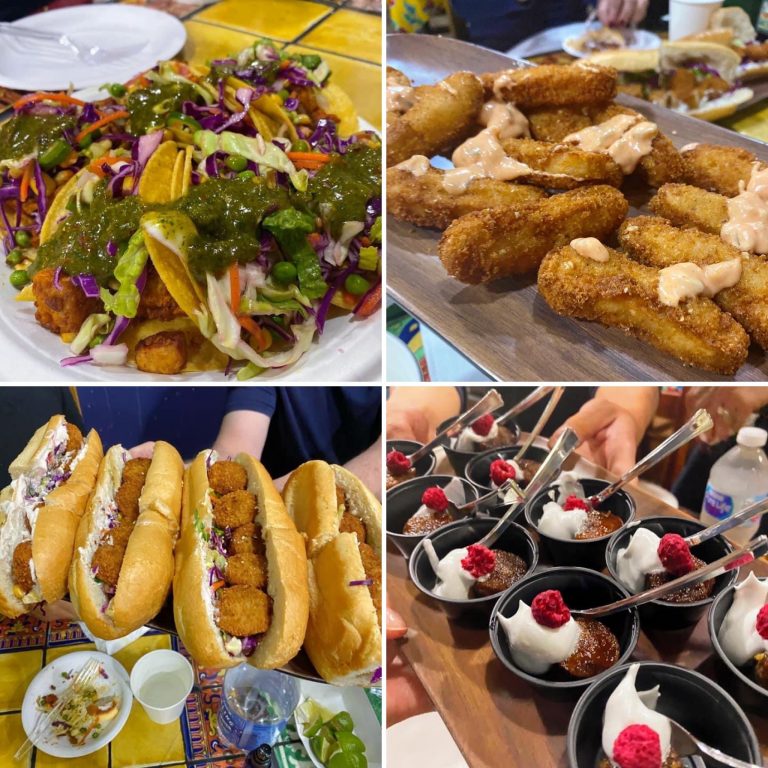The tasty burger was artificial meat!

1. artificial meat, first time!
My friend Ricky Takizawa from Los Angeles invited me to eat a burger at Es Todo in downtown Los Angeles. How delicious! And no stomach upset! What is this?
Owner Sarkis Vartanian (Sarkis Vartanian) explained.
A few years ago, he was diagnosed with early-stage cancer himself and reassessed his future life.
Then he realized that a diet without meat, fish, or eggs was best, and he concluded that he should close the restaurant he had been running and start over by making burgers with the best ingredients, which were tasty and healthy. And that’s what this restaurant is!
The “Impossible Burger” is the result of researching soybeans, avocados, cooking oil, and all sorts of other ingredients. It is a “one-stop shop” for all things “Kosher” and “Japanese”. The French fries, mayo, and ketchup are all recreated with even more flavor than the original.
For a gourmet like Sarkis, there is no interest in creating a menu for vegans. Good food just happens to be made entirely of vegetables.
https://iloveestodo.com/
In February 2020, three months after this amazing experience, my friends and I were again given a taste of the new menu. Of course, both the burger and the chicken fried chicken style are all made with soy as the base, not to resemble the real thing, but only to be original and delicious.
Let’s build an antenna store in Japan! As we were preparing to do so, Corona arrived. We will surely make this continuation happen in After Corona!
Now, let me digress a bit here.
Japanese people started eating meat about 150 years ago, in 1882, when the Meiji Restoration policy issued an ordinance stating that beef was the source of health and longevity. From there, it became a nationwide phenomenon.
In the earlier Edo period, fermentation scientist Takeo Koizumi says, the protein obtained from meat came mainly from soybeans (miso soup + tofu + natto + fried tofu).
So when beef became a soy-based alternative meat, it was merely a return to the Edo period.
◆ Reference
Power foods from the Edo period boost your immune system!
http://spdy.jp/news/s5352/
2. why do we need artificial meat? (Background of the development of artificial meat)
Health issues such as increase in adult diseases due to obesity
Food shortage and food loss due to population growth
Environmental problems caused by global warming
Many modern diseases arise from obesity, and if humans do not become healthier, they will have shorter life spans and a greater burden of medical costs. Thus, taxpayers’ money will be wasted and national power will decline.
Regarding the environment. It is also a key issue in the Sustainable Development Goals (SDGs) adopted by the United Nations from the perspective that grain can drastically reduce water use compared to meat.
Beef farming is particularly environmentally hazardous, and cattle produce large amounts of greenhouse gases (methane gas). Because of its thriving cattle industry, Australia is a greenhouse gas emitter. Isn’t that great?
It takes about 11 kg of feed to produce 1 kg of beef and 20,000 times the amount of water needed. This is how environmentally burdensome beef is. The same is true for pork and chicken.
For this reason, more and more people in the West are reducing the amount of meat they eat and becoming vegetarian or vegan.
3. can’t you do something about this naming!
Fake meat is called too many things: meat alternative, cell-based meat, plant-based meat, etc.!
This surely needs a new genre of naming!
Restaurant menu lists in the U.S. and Europe are marked with the [v] symbol, indicating that the food is vegan. Nowadays, the [pb] mark (pb for plant-based) can be seen in an increasing number of places.
How about “plant meat” (plant meat) in Japan? I don’t think cellular meat will be very popular.
*A friend of mine who read this article told me that it is described as Vege Meat in Los Angeles these days. I think this naming is the best.
4. what is artificial meat? (There are two types. Stem cell based cell meat and soy based plant meat)
In 2013, the world’s first meat alternative was created at Maastricht University in the Netherlands.
The manufacturing process involves extracting stem cells from animal muscle, soaking them in a culture medium to create muscle tissue, and finally producing muscle fiber.
However, meat substitutes made from stem cells are still in the early stages of research and development in terms of taste, texture, and nutritional value, and many technical problems exist. Moreover, the cost is high and commercialization is still a long way off.
Meanwhile, the development of technically simpler and less costly plant-derived meat substitutes has progressed rapidly, creating a relatively mature industry chain. In this article, we will limit our discussion to plant-derived artificial meat.
This is a new field called “agri-tech” (Agriculture x Technology) or “food tech” that will make this kind of thing possible.
Combining IT with agriculture is possible by tweaking the genome of food ingredients to increase efficiency. The artificial meat market is increasingly being entered by venture companies and major food companies.
Nestlé began selling Garden Gourmet Sensational Burger, an artificial meat patty, in Europe in July 2020. The umami flavor was enhanced by fermenting plant-derived ingredients using proprietary technology. The product received the highest “A” nutritional score on a five-point scale calculated by the French authorities.
The global artificial meat market will grow from 80 billion yen in 2017 to 120 billion yen in 2008.
5. summary
First, everyone try it! Try it!
…but not that you can’t have it in Japan, either…
I still don’t have much on the menu, and there’s not much variation in taste.
◆ Reference
UMAMI BURGER, a hamburger restaurant from Los Angeles with 24 locations in the U.S.
https://umamiburger.jp/
A list of plant meat (alternative and artificial meat) products available for purchase in Japan
https://yoshikazu-komatsu.com/vegemeat-ja/
Just a change in diet? Cellular Meat” Offers Future Possibilities
https://sellwell.jp/sellwelly/cellbasedmeat-futurepossibilities/
Nestlé to Produce Artificial Meat in Three Global Regions, Driven by Health-consciousness : Nihon Keizai Shimbun
https://www.nikkei.com/article/DGXMZO62029020Z20C20A7TJ2000/
Food is moving with the times, and so is artificial meat”: The Future Envisioned by Nippon Ham President Hata : Nihon Keizai Shimbun
https://www.nikkei.com/article/DGXMZO64209800U0A920C2000000/
Meat can be produced artificially” Meat tech companies around the world are changing the way we think about meat.
https://forbesjapan.com/articles/detail/25565
The Disruptive Power of “Meatless” Threatens the 200 Trillion Yen Meat Market: Nikkei
https://www.nikkei.com/article/DGXMZO52666110X21C19A1000000/
↓November 18, 2019 at Es Todo, Los Angeles

↓ February 25, 2020 at Mercado La Paloma, Los Angeles






